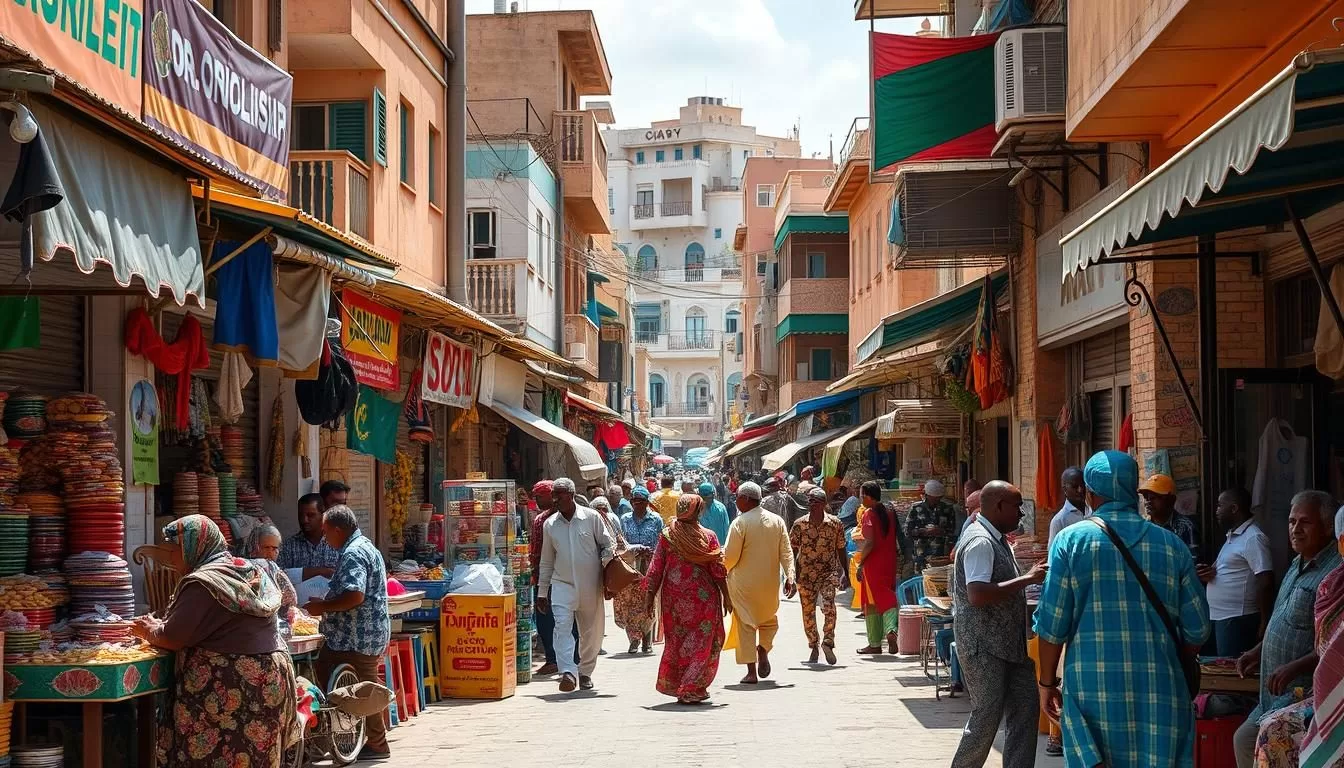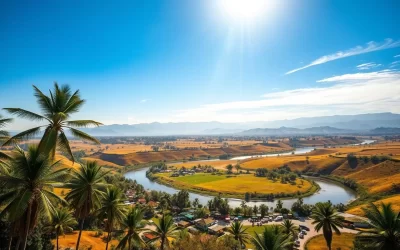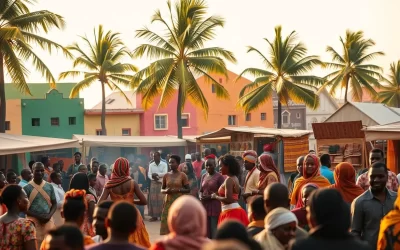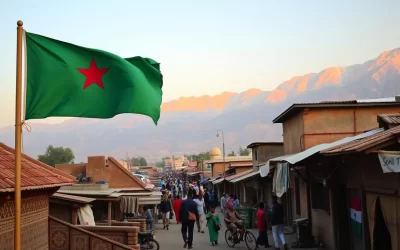Welcome to Mogadishu, the vibrant heart of Somalia, where the Indian Ocean whispers tales along the bustling Lido beach. As you step into this city, you’re greeted by the freshest seafood, straight from the fishermen’s nets to your plate.
The city’s rich history is visible in its crumbled walls and the resilient spirit of the ancient Hamarweyne district. As you explore, you’ll discover a blend of cultures, with the aroma of Somali tea wafting through vibrant markets. Mogadishu offers a unique blend of historical significance and modern resilience, making it an intriguing destination for adventurous travelers.
From pristine beaches to vibrant markets and historical sites, you’ll experience the story of Somalia’s past, present, and hopeful future. This guide will take you through the must-see attractions that showcase the city’s unique character and the resilient spirit of its people.
Discovering Mogadishu: A City of Resilience and Beauty
As you step into Mogadishu, you’re met with a city that’s as resilient as it is beautiful. Mogadishu might not be on most backpackers’ radar, but for the adventurous, it offers a unique glimpse into a city on the mend.
Brief History of Mogadishu
Mogadishu has a storied past, dating back to the 10th century when it was a significant trading port. The city’s history is marked by various cultural influences, including Arab, Persian, and Italian colonial powers. This diverse heritage is visible in its architecture and traditions.
Understanding Modern Mogadishu
Modern Mogadishu is a city of contrasts, where ancient traditions coexist with contemporary developments. The resilience of its people is evident in their determination to revitalize their city. New businesses, restaurants, and cultural venues are opening, showcasing the city’s renaissance.
| Aspect | Historical Significance | Modern Development |
|---|---|---|
| Culture | Influenced by Arab, Persian, and Italian cultures | Blend of traditional and modern practices |
| Economy | Historically a significant trading port | Rebuilding with new businesses and investments |
| Architecture | Mix of Islamic, Persian, and Italian styles | Modern buildings alongside historical landmarks |
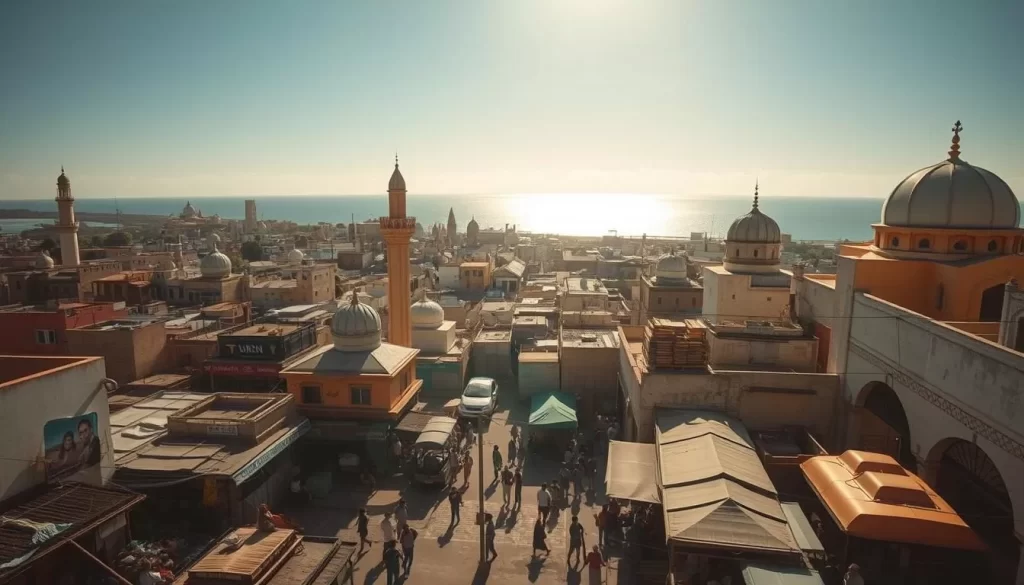
Mogadishu’s Stunning Beaches and Coastal Attractions
Along the Indian Ocean, Mogadishu’s beaches present a stunning display of pristine sands and turquoise waters. The city’s coastline is dotted with beautiful beaches that offer a unique blend of natural beauty and cultural experience.
Lido Beach: The Heart of Mogadishu’s Social Scene
Lido Beach is the social hub of Mogadishu, where locals and visitors gather to enjoy the sun, swim in the warm waters of the Indian Ocean, and experience the vibrant atmosphere of weekend gatherings. You can relax, socialize, and enjoy fresh seafood from nearby vendors.
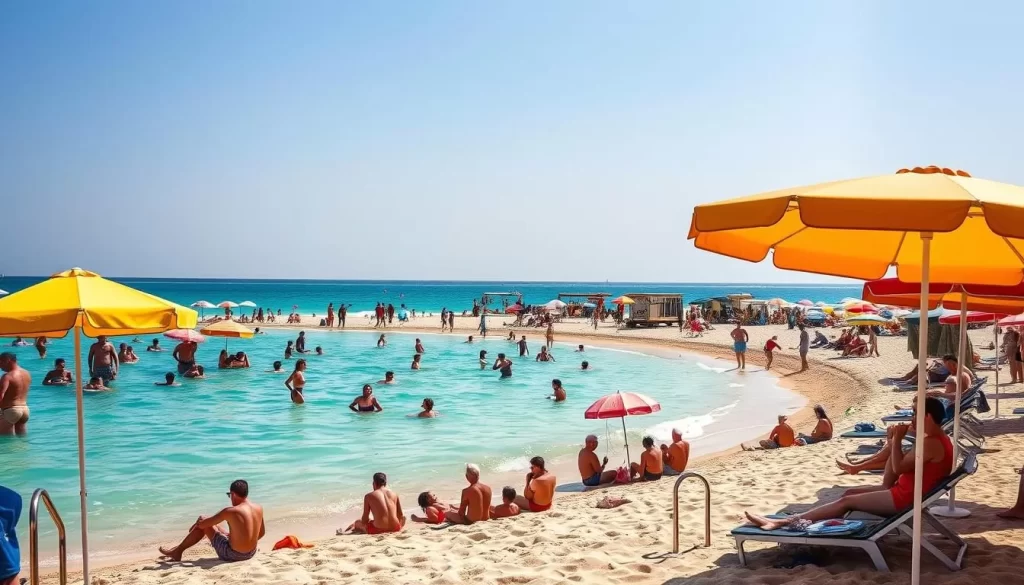
Jazeera Beach: A Peaceful Coastal Retreat
For a more tranquil beach experience, head to Jazeera Beach, about 20km south of the city. This peaceful retreat offers fewer crowds and unspoiled natural beauty, making it perfect for unwinding and soaking in the local culture.
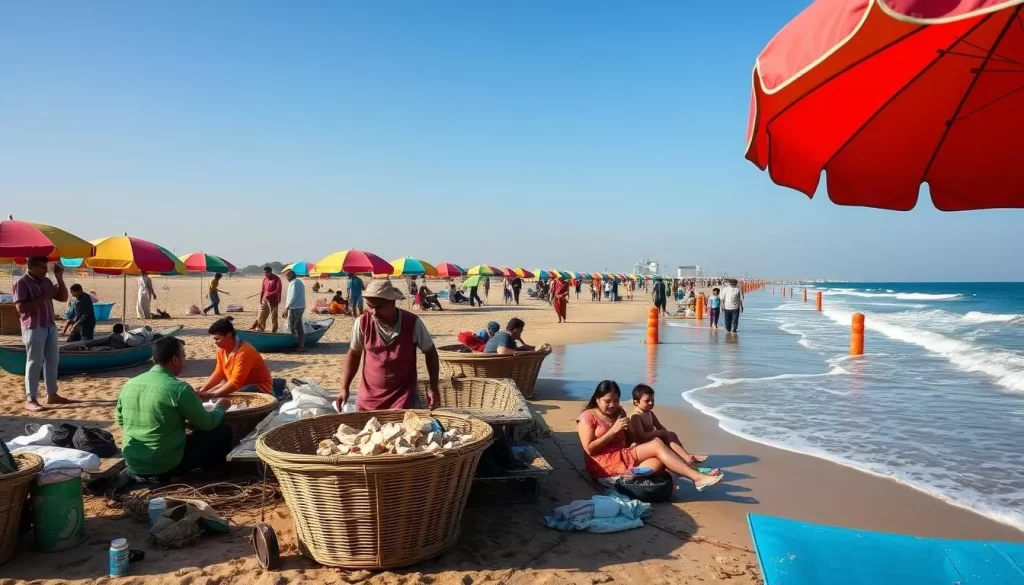
Enjoying Seafood and Ocean Views
Both Lido and Jazeera Beaches provide stunning ocean views, especially at sunset when the sun dips below the horizon. You can enjoy fresh seafood, prepared with traditional Somali spices, while taking in the breathtaking views of the Indian Ocean. It’s a great place to relax and experience the local way of life.
The beaches of Mogadishu are not just great spots to relax; they also offer opportunities for water activities like swimming, snorkeling, and beach soccer. Whether you’re looking for adventure or just a peaceful spot to enjoy the view, Mogadishu’s beaches have something for everyone.
Historical and Cultural Sites in Mogadishu, Somalia: Best Things to Do
As you explore Mogadishu, you’ll discover a wealth of historical and cultural sites that showcase the city’s fascinating past. These sites not only reflect the city’s rich history but also its resilience and cultural heritage.
Arba-Rucun Mosque: Architectural Marvel
The Arba-Rucun Mosque, also known as the Mosque of the Four Pillars, is an architectural marvel that dates back to the 13th century. This historic mosque is one of the oldest Islamic structures in the Horn of Africa, showcasing a unique blend of local and Arabic architectural influences.

Mogadishu Cathedral: A Testament to the Past
Mogadishu Cathedral, although damaged during the civil war, remains an impressive example of Italian colonial architecture. This historic site tells the story of Mogadishu’s complex past, reflecting the city’s cultural and religious history.
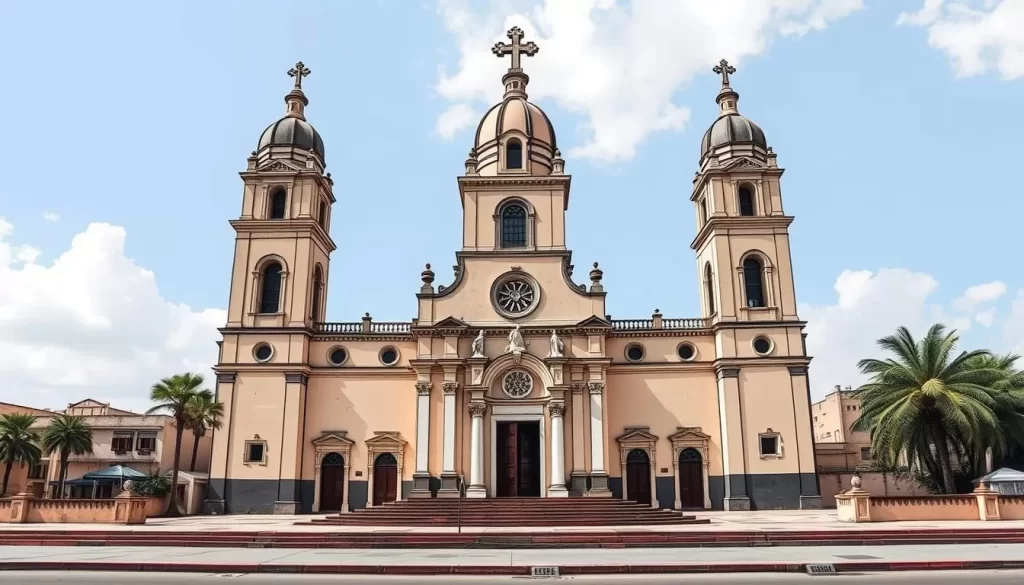
National Museum of Somalia: Preserving Cultural Heritage
The National Museum of Somalia houses a vast collection of artifacts that reflect the country’s rich history and cultural heritage. Although the museum has faced challenges, it remains a great place to learn about Somalia’s cultural evolution, from prehistoric times to the present day.
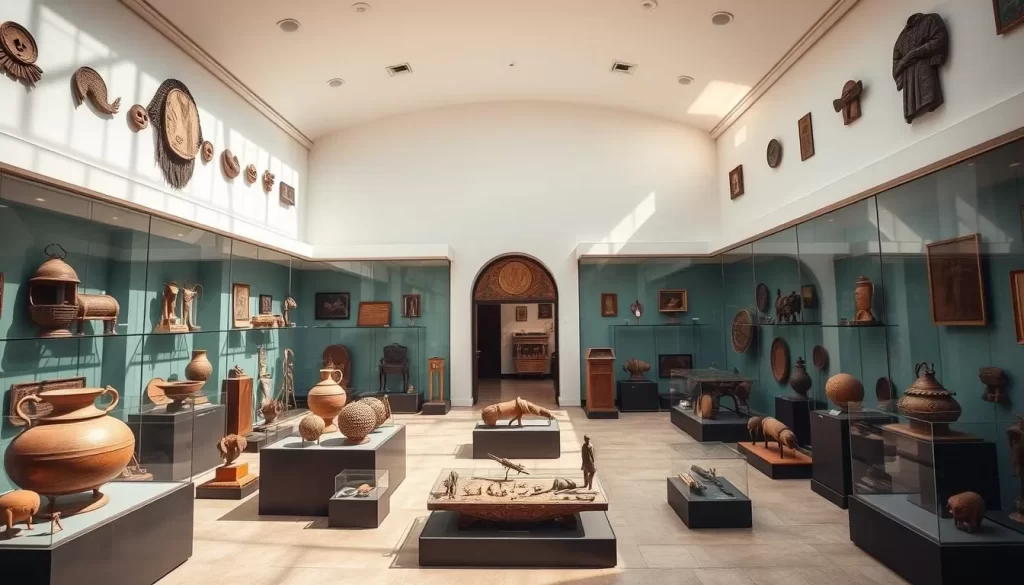
Mogadishu’s historical sites offer a fascinating window into the city’s rich past, with architectural wonders that have survived centuries of change and conflict. Local guides can provide deeper insights into these landmarks, sharing stories about their significance to the Somali people.
These historical sites not only showcase impressive architecture but also help visitors understand the diverse cultural influences that have shaped Mogadishu over the centuries. Photography enthusiasts will find these historical structures particularly rewarding subjects, with their distinctive architectural features and the dramatic juxtaposition of ancient buildings against the backdrop of a modernizing city.
Vibrant Markets and Shopping Experiences
Shopping in Mogadishu’s vibrant markets is an adventure that allows you to engage with the local community and discover unique products. As you navigate through the bustling stalls and shops, you’ll be immersed in the daily life of the city’s residents.
Bakara Market: The Commercial Hub

Bakara Market stands as the largest and most famous market in Mogadishu, a sprawling commercial hub where locals trade everything from fresh produce and livestock to textiles, electronics, and household goods. The market is particularly known for its aromatic spice section, where vendors display colorful mounds of local and imported spices that are essential to Somali cuisine.
You can practice your bargaining skills and experience the local commerce firsthand in this bustling market.
Hamarweyne District: Old Town Charm and Local Crafts
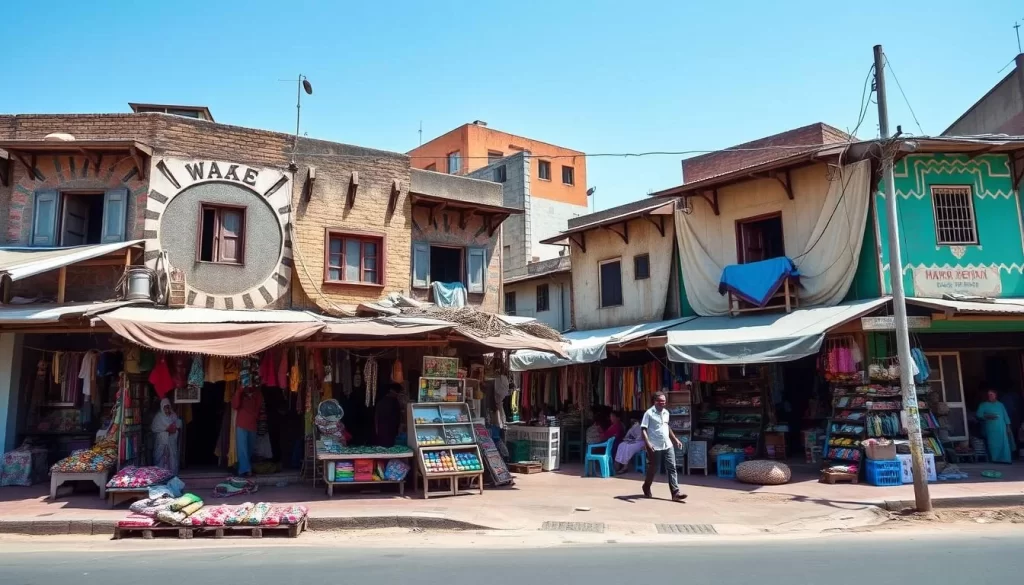
In the Hamarweyne district, the oldest part of Mogadishu, you’ll find narrow winding streets lined with shops selling traditional crafts, including intricately woven baskets, wooden carvings, and beaded jewelry made by local artisans. This historic area maintains much of its original architecture, with buildings featuring distinctive Somali design elements combined with Arab and Italian influences.
Shopping in these markets provides more than just souvenirs—it offers a window into local commerce, traditions, and social interactions, with opportunities to engage with friendly vendors who are often eager to share stories about their products and culture.
For the best experience, visit markets in the morning when they’re most active. Don’t hesitate to practice your bargaining skills, which is an expected part of the shopping experience in this part of the world.
Authentic Somali Cuisine and Dining Experiences
Experience the authentic taste of Somalia through its diverse and rich culinary traditions. Somali cuisine is a unique blend of African, Middle Eastern, and Italian influences, shaped by the country’s strategic location and cultural heritage. As you explore Mogadishu, you’ll discover a vibrant food scene that reflects the city’s resilience and hospitality.
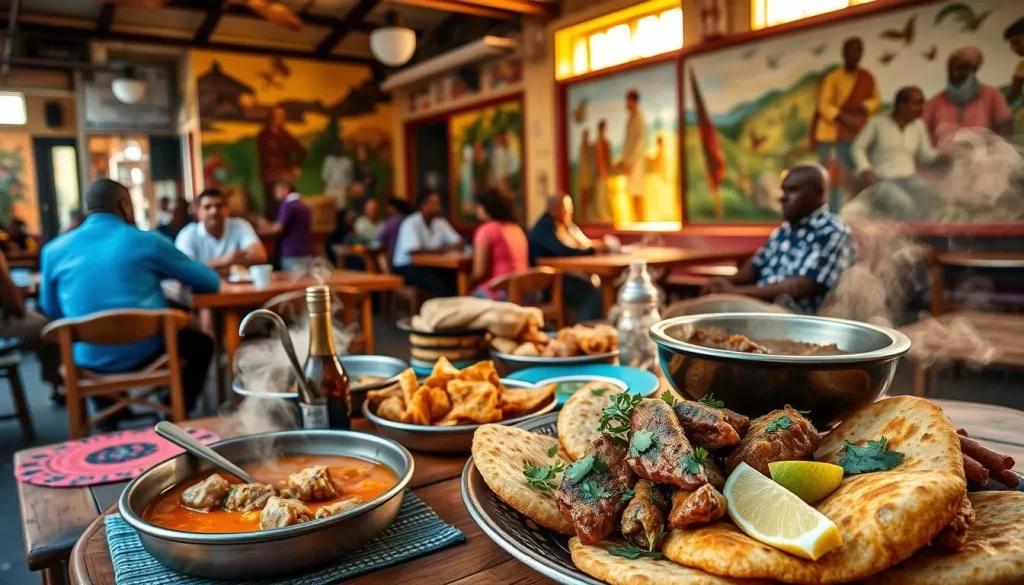
Must-Try Somali Dishes
Somali cuisine offers a variety of dishes that are both flavorful and culturally significant. Here are some must-try foods when visiting Mogadishu:
- Bariis Iskukaris: A spicy Somali rice dish cooked with fragrant basmati rice, cardamom, cloves, and cinnamon, typically served with tender meat and vegetables.
- Canjeero: A sourdough pancake similar to Ethiopian injera but lighter in texture, often enjoyed at breakfast with honey, ghee, or savory stews.
Bariis Iskukaris and Canjeero
Start your day with Canjeero, a soft and tangy flatbread that’s perfect for breakfast. Pair it with Bariis Iskukaris, a flavorful rice dish that’s sure to satisfy your taste buds. These dishes are staples in Somali cuisine and offer a genuine taste experience.
Shaah Somali: Traditional Tea Culture
No culinary experience in Mogadishu is complete without sampling Shaah Somali, the traditional spiced tea that’s an integral part of Somali hospitality. Brewed with cardamom, cinnamon, cloves, and generous amounts of sugar, Shaah Somali is a comforting beverage that warms the heart and soul.
Best Places to Eat in Mogadishu
For an authentic dining experience, look for local restaurants in the Hamarweyne district, where you can taste traditional dishes in settings frequented by locals. Many restaurants offer communal dining experiences, where food is served on large platters meant for sharing, reflecting the importance of community in Somali food culture. Be sure to try seafood at restaurants near Lido Beach, where you can enjoy the freshest catch prepared with local spices.
Some key aspects to look out for include the blend of international influences in Somali cuisine, the significance of communal dining, and the variety of local ingredients used in traditional dishes.
Planning Your Visit to Mogadishu: Practical Tips
As you prepare to travel to Mogadishu, understanding the best times to visit and safety guidelines is crucial. This will help ensure a smooth and enjoyable trip.
Best Time to Visit
The best time to visit Mogadishu is during the dry season, from December to March. During this period, temperatures are more moderate, and rainfall is minimal, making it ideal for exploring the city and enjoying its beaches.
Safety Considerations
Due to ongoing security concerns, it’s essential to research the current situation thoroughly before planning your trip. Consider hiring a local guide or security detail for the duration of your stay to ensure your safety.
Accommodation Options
Most international visitors arrange their accommodation in advance. Options range from international-standard hotels like Peace Hotel and Decale Hotel to more budget-friendly guesthouses in safer areas of the city.
| Category | Description | Cost |
|---|---|---|
| Budget Accommodation | Guesthouses in safer areas | $30-$50 per day |
| Mid-range Hotels | International-standard hotels | $50-$100 per day |
| Luxury Hotels | High-end hotels with security | $100+ per day |
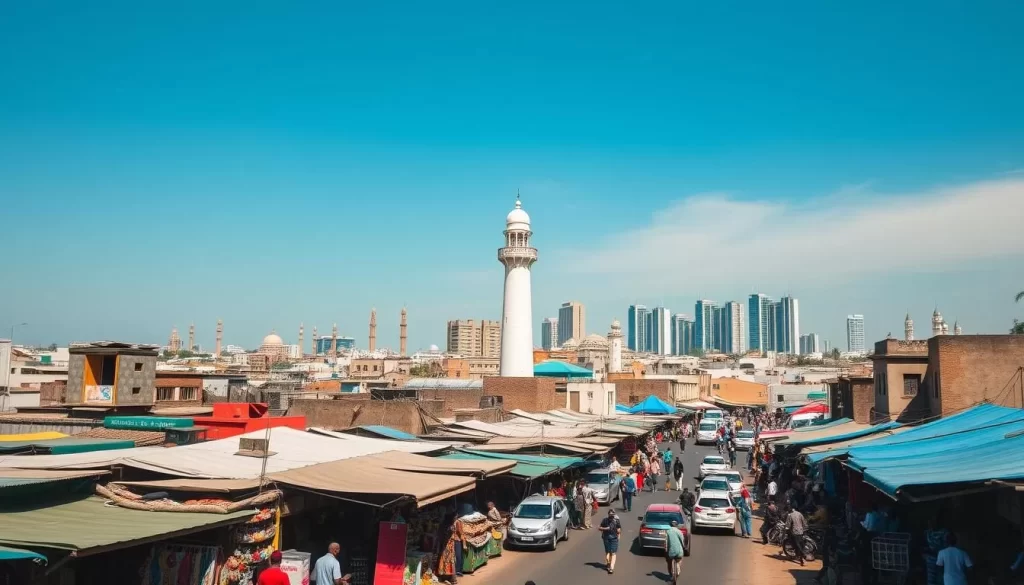
Conclusion
Mogadishu’s story is one of resilience, and its people invite you to be a part of it. As you explore this vibrant city, you’ll discover a rich history and a life that’s full of energy. From the sun-drenched beaches to the bustling markets, Mogadishu offers a unique travel experience.
The city’s national parks and museum showcase its diverse landscapes and cultural heritage. With your camera, capture the stunning views and architectural wonders. As you visit this country, you’ll be rewarded with memories and stories unlike any other destination.
In Mogadishu, you’ll find a place that’s rebuilding itself for a new era, offering travelers a rare glimpse into a city that’s balancing its past with its future.
The above is subject to change.
Check back often to TRAVEL.COM for the latest travel tips and deals.
